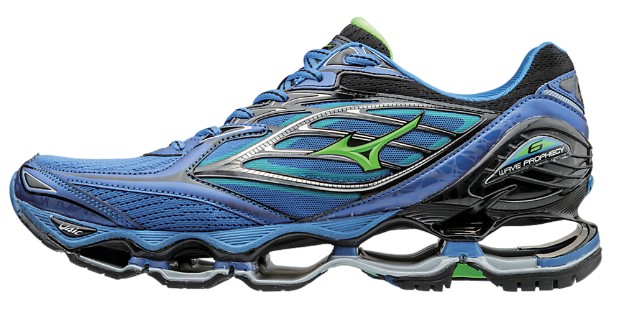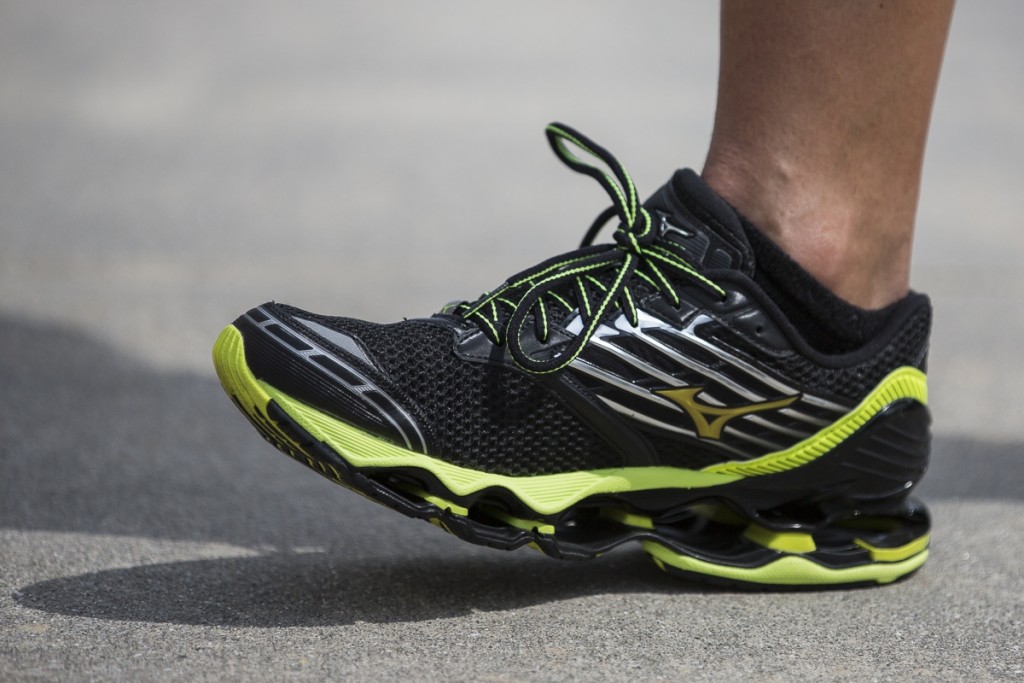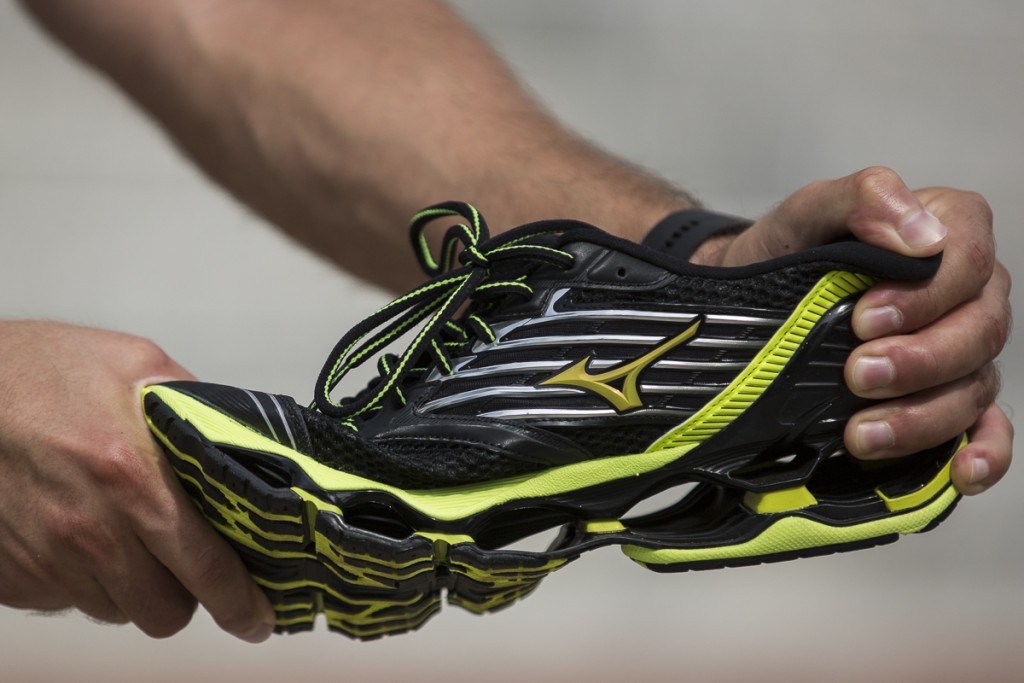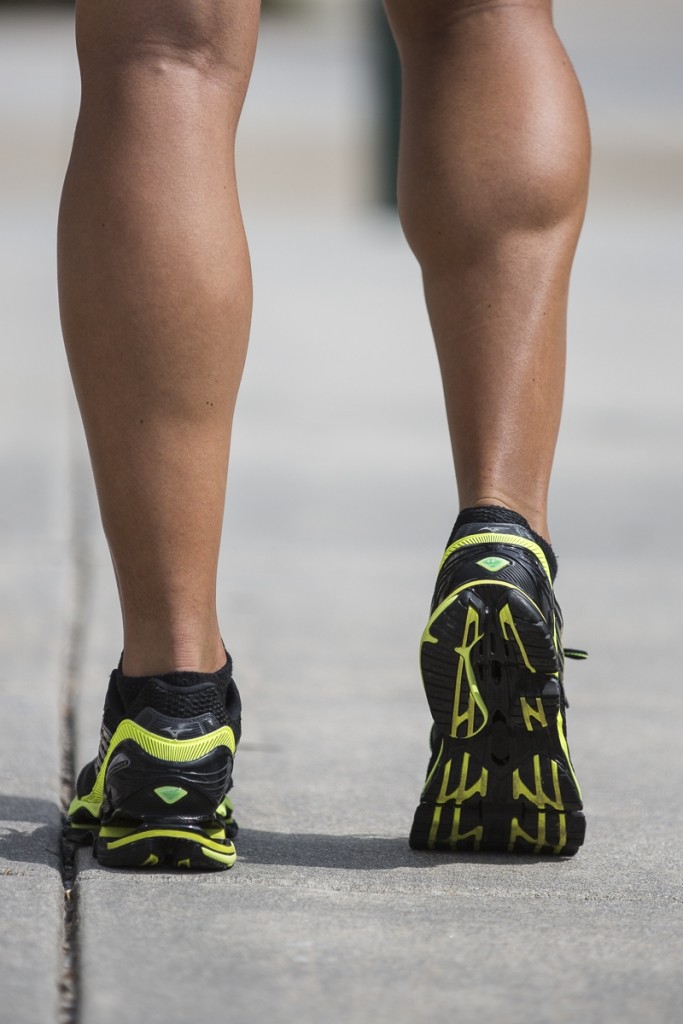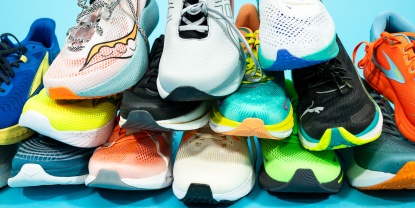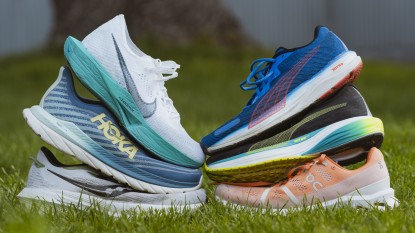Mizuno Wave Prophecy 5 Review
Our Verdict
Our Analysis and Test Results
The New Mizuno Wave Prophecy 6 vs. Wave Prophecy 5
While we await confirmation from Mizuno, check out the new look! On the left, the new Wave Prophecy 6, compared to the older Wave Prophecy 5, right.
Hands-On Review
The Mizuno Wave Prophecy 5 stands out from the rest of the group with the Wave Plate technology Mizuno uses in the midsole. This design creates a unique and efficient ride not found on any other shoe in our test group.
Responsiveness
With its stiffness, the Prophecy 5 gives good responsiveness. Though we felt some great spring in parts of the gait cycle, the high degree of compression in the sole seems to eat some of the momentum and somewhat feels like stepping on a twig with the horizontal waves rolling across the forefoot and toes. This sensation is unique among all the road running shoes in our testing, though it might not be for everyone. We noticed the Prophecy 5 to be so stiff that we think it falls into an anti-minimalist category that prevents your foot from strengthening since the shoe is doing a lot of work for you.
Landing Comfort
This shoe earned an average landing comfort score compared to the rest of the products we tested. The plates used in the sole of the Prophecy 5 give it a very firm ride. It does have spring to it, but it also has something of a sinking feeling as it rolls that seems to swallow some of the spring and is not necessarily super comfortable or soft. If softness is important to you, the Hoka Clifton 3 could be more of what you're looking for.
Upper Comfort
We rated the Prophecy 5 with a fairly comfortable upper. If you have feet on the narrow side, you'll love the upper on these shoes. We can tell Mizuno put in some time manufacturing this upper design — it fits as snug and seamless as a sock. Even the laces are premium material. The Brooks Glycerin and Saucony Kinvara 8 score highest in upper comfort.
Stability
We gave this shoe a moderate stability rating. Even though the Prophecy 5 is considered a shoe for neutral runners, we feel that the rigidity and firmness of the ride allows for a larger range of pronators to get away with using them. If you wear a strictly neutral and more minimal class of shoe, we think you'll thoroughly enjoy the Saucony Kinvara 8. Also, we found this shoe works best with those who have an average-to-high arch.
Breathability
In general, our stability shoes were less breathable than the neutral shoes, which tended to be lightweight, with thinner uppers that had less reinforcing features. Compared to the rest of the lineup, the Prophecy 5 fares well in terms of breathability, and does a nice job of letting our feet breathe. Mizuno went for a simple and minimal approach on this upper, probably to shave some weight since the plastic Wave Plate Technology used is so heavy. Keep in mind though, the version with the full jet black upper will likely absorb more heat on a hot summer day.
A comparably breathable stability shoe is the Hoka Clifton 3, whose mesh upper, like the Prophecy 5, allows some fair degree of breathing, but is hampered by its multiple layers of mesh, including a less permeable inner layer. The design is fairly different, so breathability alone should not force the hand in the decision between these two. A more similar design to the Prophecy 5 is the Asics Gel-Nimbus 19, which also has superior breathability with its FluidFit seamless mesh upper that fits more closely to the foot and better wicks away moisture.
Weight
The Prophecy 5 weighs in as the heaviest shoe of the group at 29.5 ounces per pair in a size 11. This heaviness is due to the sturdy and firm plastic plates in the sole that accentuate the quick transition feeling in your gait cycle. We feel the responsive feedback makes the shoe run lighter, though not enough to compensate for the unavoidable heavy weight. If you're hungry for the lightest and fastest shoe we tested take a look at the Saucony Kinvara 8 or the Hoka Clifton 3.
Durability
With the thick plastic Wave Plate Technology used in the Prophecy 5, this shoe is built to last, and earned our highest score in durability. We logged around 15 miles in this shoe with no sign of wear or any change in the springiness of our stride. Since the Prophecy 5 uses a wave plate in place of a foam cushion, we feel it will take much longer for this shoe to break down. We believe this shoe is not nearly as cushy as many of the others we tested, but will remain consistently comfortable mile after mile, thanks to the long lasting midsole.
Best Applications
Thanks to Mizuno's energy saving Wave Plate technology, the Prophecy 5 is a good choice to give your lower legs, ankles, and feet some rest time with its anti-minimalist design.
Value
The Prophecy 5 will cost you a pretty penny at $220. We feel this is unnecessarily expensive based on its performance, but rest assured, Mizuno did not skimp on quality or materials. If your primary concern is a shoe that could double as a work boot or make it through a nuclear explosion without hiding in a refrigerator (a sacrilegious scene), this is your shoe. If you are more concerned with performance, you might be better off looking at something like the Asics Gel-Nimbus 19, which drops the price down about $80 to around $150 a pair.
Conclusion
If a springy, stiff, and responsive ride along with a resilient sole unit interests you, fork out the extra cash and start logging the added miles the Prophecy 5 will give you.


